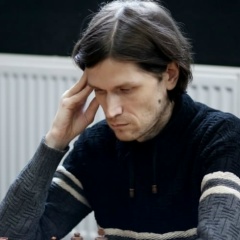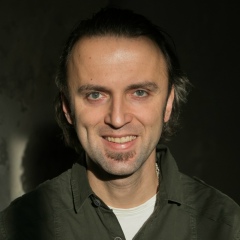Сегодня Санкт-Петербург может отмечать свое 713-летие. И это совсем не шутка. Культивируемый наверно все три столетия миф о сотворении Петербурга в 1703 году Петром Первым из ничего на пустом месте имеет мало общего с реальностью - история поселений на Неве и Охте гораздо богаче и древнее.
В 13 веке на территории нынешней Ингерманландии проживали финно-угорские и русские (новгородские) народы, но о существовании в устье Невы населенных пунктов до 14 века практически ничего не известно: если они там были, то вряд ли они были городскими. В это время Шведы вели активные завоевательные войны, расширяя свою территорию на восток. К концу 13 века была захвачена Финляндия, в 1293 году на берегу Финского залива основан Выборгский замок (этот год считается годом основания города Выборга). Дальнейший план шведов заключался в построении укрепления в устье Невы. Шведы вышли из Стокгольма в морской поход 30 мая 1300 года, чтобы построить крепость Ландскрона на выбранном заранее месте левом берегу устья реки Охты. Дата закладки первого камня крепости неизвестна, именно поэтому предлагается считать датой основания города день начала похода Шведов. Основателем Ландскроны и Выборга является один и тот же человек - Торгильс Кнутссон, то есть именно его, а не Петра 1, следует считать творцом первого города в Устье Невы. К сожалению, судьба Ландскроны печальна - менее чем через год после ее основания войска Новгородской Республики вторглись в крепость и разрушили ее, выгнав Шведов с ключевой стратегической позиции.
Точное время возобновления поселения в устье Охты неизвестно, но уже в 16 веке в летописях отмечалось наличие небольшого села, Невского Устья, а в середина 16 века был построен порт-крепость уже под властью Московского княжества, получивший название Невский Городок. Однако, в период смутного времени в Русском (Московском) Царстве на рубеже 16-17 веков, контроль над удаленным от центра Невским Городком был затруднен, чем и воспользовались Шведы, снова построив на левом берегу Охты свою крепость - Ниеншанц, а на правом берегу продолжил формироваться Невский Городок, названный Шведами Ниенштадт (финнами - Ниен), получивший официальный статус города в 1632 году. Название Ниен было дано Шведами именно по русскому наименованию поселения - Невский. Население города состояло главным образом из шведов, финнов, русских и немцев.
Крепости Ниеншанц повезло чуть-чуть больше, чем Ландскроне - она просуществовала несколько десятилетий. В начале 18 века войска Русского Царства во главе с Петром Первым вторглись в Ингерманландию и захватили крепость 1 мая 1703 года. Город Ниен был переименован в Шлотбург (голландское название - "замок-город"). Согласно официальной истории крепость Ниеншанц была уничтожена, однако это произошло не сразу. Долгое время крепость использовалась русскими не по военному назначению, постепенно разрушаясь. Известно, что еще в середине 19 века существовало центральное укрепление Ниеншанца. Что касается города, то центром строительства Санкт-Петербурга стало не устье Охты, а острова дельты Невы. Шлотбург был включен в состав Петербурга в 1828 году.
Конечно, можно возразить, что никакой связи между Лендскроной и Санкт-Петербургом нет, поэтому нельзя считать, что город основан в 1300 году. Однако можно привести и контраргументы.
1. "Несовпадение названий." А как тогда быть с возрастом Петербурга, который успел побывать и Ленинградом и Петроградом?
2. "В 14-15 веках никакого города в устье Невы не было, история одного (Ландскроны) закончилась, а Ниен это совсем другой город." А разве это мешает считать годом основания СПбГУ 1728, ведь без долгий период, когда Академический Университет Петра 1 уже был закрыт, а Петербургский еще не открыт?
3. "Крепость Ландскрона была разрушена, Ниенштадт и Ниеншанц тоже - все, что строилось потом суть новые города." Московский Кремль тоже много раз разрушался и строился с нуля, Москва сама была сожжена французами в 1812 и отстроена заново, однако не этот год считается годом ее основания?
4. "Территориально Санкт-Петербург и Шлотбург - разные города, более молодой поглотил более старый, но не стал от этого старше." Пожалуй, это самый веский аргумент, но в Петербурге есть футбольный клуб Зенит, который считается основанным в 1925 году. Однако в 1925 году была основана команда Сталинец, а Зенит был основан в 1936 году, Сталинец же был присоединен к Зениту с 1940 года.
Поэтому, счет истории Петербурга от 1703 года есть не более чем результат политической воли - которая не желает связывать российский (московский) Петербург с Шведскими, Финскими и русскими (новгородскими) поселениями. Но западникам и сторонникам европейской интеграции ничто не мешает праздновать сегодня 713-летие города!
#Петербург #Ингерманландия #Ландскрона
В 13 веке на территории нынешней Ингерманландии проживали финно-угорские и русские (новгородские) народы, но о существовании в устье Невы населенных пунктов до 14 века практически ничего не известно: если они там были, то вряд ли они были городскими. В это время Шведы вели активные завоевательные войны, расширяя свою территорию на восток. К концу 13 века была захвачена Финляндия, в 1293 году на берегу Финского залива основан Выборгский замок (этот год считается годом основания города Выборга). Дальнейший план шведов заключался в построении укрепления в устье Невы. Шведы вышли из Стокгольма в морской поход 30 мая 1300 года, чтобы построить крепость Ландскрона на выбранном заранее месте левом берегу устья реки Охты. Дата закладки первого камня крепости неизвестна, именно поэтому предлагается считать датой основания города день начала похода Шведов. Основателем Ландскроны и Выборга является один и тот же человек - Торгильс Кнутссон, то есть именно его, а не Петра 1, следует считать творцом первого города в Устье Невы. К сожалению, судьба Ландскроны печальна - менее чем через год после ее основания войска Новгородской Республики вторглись в крепость и разрушили ее, выгнав Шведов с ключевой стратегической позиции.
Точное время возобновления поселения в устье Охты неизвестно, но уже в 16 веке в летописях отмечалось наличие небольшого села, Невского Устья, а в середина 16 века был построен порт-крепость уже под властью Московского княжества, получивший название Невский Городок. Однако, в период смутного времени в Русском (Московском) Царстве на рубеже 16-17 веков, контроль над удаленным от центра Невским Городком был затруднен, чем и воспользовались Шведы, снова построив на левом берегу Охты свою крепость - Ниеншанц, а на правом берегу продолжил формироваться Невский Городок, названный Шведами Ниенштадт (финнами - Ниен), получивший официальный статус города в 1632 году. Название Ниен было дано Шведами именно по русскому наименованию поселения - Невский. Население города состояло главным образом из шведов, финнов, русских и немцев.
Крепости Ниеншанц повезло чуть-чуть больше, чем Ландскроне - она просуществовала несколько десятилетий. В начале 18 века войска Русского Царства во главе с Петром Первым вторглись в Ингерманландию и захватили крепость 1 мая 1703 года. Город Ниен был переименован в Шлотбург (голландское название - "замок-город"). Согласно официальной истории крепость Ниеншанц была уничтожена, однако это произошло не сразу. Долгое время крепость использовалась русскими не по военному назначению, постепенно разрушаясь. Известно, что еще в середине 19 века существовало центральное укрепление Ниеншанца. Что касается города, то центром строительства Санкт-Петербурга стало не устье Охты, а острова дельты Невы. Шлотбург был включен в состав Петербурга в 1828 году.
Конечно, можно возразить, что никакой связи между Лендскроной и Санкт-Петербургом нет, поэтому нельзя считать, что город основан в 1300 году. Однако можно привести и контраргументы.
1. "Несовпадение названий." А как тогда быть с возрастом Петербурга, который успел побывать и Ленинградом и Петроградом?
2. "В 14-15 веках никакого города в устье Невы не было, история одного (Ландскроны) закончилась, а Ниен это совсем другой город." А разве это мешает считать годом основания СПбГУ 1728, ведь без долгий период, когда Академический Университет Петра 1 уже был закрыт, а Петербургский еще не открыт?
3. "Крепость Ландскрона была разрушена, Ниенштадт и Ниеншанц тоже - все, что строилось потом суть новые города." Московский Кремль тоже много раз разрушался и строился с нуля, Москва сама была сожжена французами в 1812 и отстроена заново, однако не этот год считается годом ее основания?
4. "Территориально Санкт-Петербург и Шлотбург - разные города, более молодой поглотил более старый, но не стал от этого старше." Пожалуй, это самый веский аргумент, но в Петербурге есть футбольный клуб Зенит, который считается основанным в 1925 году. Однако в 1925 году была основана команда Сталинец, а Зенит был основан в 1936 году, Сталинец же был присоединен к Зениту с 1940 года.
Поэтому, счет истории Петербурга от 1703 года есть не более чем результат политической воли - которая не желает связывать российский (московский) Петербург с Шведскими, Финскими и русскими (новгородскими) поселениями. Но западникам и сторонникам европейской интеграции ничто не мешает праздновать сегодня 713-летие города!
#Петербург #Ингерманландия #Ландскрона
Today, St. Petersburg can celebrate its 713th anniversary. And this is not a joke at all. Probably the myth of the creation of St. Petersburg in 1703 by Peter the Great, cultivated for all three centuries, from little in nothing has little to do with reality - the history of settlements on the Neva and Okhta is much richer and more ancient.
In the 13th century, Finno-Ugric and Russian (Novgorod) peoples lived on the territory of present-day Ingermanland, but almost nothing is known about the existence of settlements in the Neva estuary until the 14th century: if they were there, it is unlikely that they were urban. At that time, the Swedes waged active war of conquest, expanding their territory to the east. By the end of the 13th century, Finland was captured, in 1293 the Vyborg Castle was founded on the shores of the Gulf of Finland (this year is considered the year of foundation of the city of Vyborg). The Swedes' further plan was to build a fortification at the mouth of the Neva. The Swedes left Stockholm on a sea voyage on May 30, 1300, in order to build the Landskrona fortress on a pre-selected location on the left bank of the mouth of the Okhta River. The date of laying the first stone of the fortress is unknown, which is why it is proposed to consider the date of the founding of the city the day the Swedes began the campaign. The founder of Landskrona and Vyborg is the same person - Torgils Knutsson, that is, he, and not Peter 1, should be considered the creator of the first city in the mouth of the Neva. Unfortunately, Landskrona’s fate is sad - less than a year after its founding, troops of the Novgorod Republic invaded the fortress and destroyed it, driving the Swedes out of a key strategic position.
The exact time of the renewal of the settlement at the mouth of Okhta is unknown, but already in the 16th century there was a small village, Nevsky Ustya, in the annals, and in the middle of the 16th century a fortress port was built already under the rule of the Moscow principality, called Nevsky Gorodok. However, during the time of troubles in the Russian (Moscow) Kingdom at the turn of the 16-17th centuries, control over the Nevsky Gorodok, remote from the center, was difficult, which the Swedes took advantage of, having again built their fortress on the left bank of the Okhta - Nyenshants, and continued on the right bank Nevsky Gorodok was formed, named by the Swedes Nienstadt (Finns - Nien), which received the official status of the city in 1632. The name Nien was given by the Swedes precisely according to the Russian name of the settlement - Nevsky. The population of the city consisted mainly of Swedes, Finns, Russians and Germans.
Fortress Nyenschanz was a little luckier than Landskrone - it lasted several decades. At the beginning of the 18th century, the troops of the Russian Kingdom, led by Peter the Great, invaded Ingermanland and captured the fortress on May 1, 1703. The city of Nien was renamed to Slotburg (the Dutch name is "castle city"). According to official history, the Nyenschanz fortress was destroyed, but this did not happen immediately. For a long time, the fortress was not used by the Russians for military purposes, gradually collapsing. It is known that back in the middle of the 19th century there was a central fortification of Nyenskans. As for the city, the center of construction of St. Petersburg was not the mouth of the Okhta, but the islands of the Neva Delta. Slotburg was incorporated into St. Petersburg in 1828.
Of course, one can argue that there is no connection between the Landskrona and St. Petersburg, therefore it cannot be considered that the city was founded in 1300. However, counterarguments can also be cited.
1. "Title mismatch." But what about the age of Petersburg, which managed to visit both Leningrad and Petrograd?
2. "In the 14-15 centuries there was no city at the mouth of the Neva, the story of one (Landskrona) ended, and Nien is a completely different city." But does it really prevent us from considering St. Petersburg State University 1728 to be the year of foundation, because without a long period when the Peter I Academic University was already closed and Petersburg was not yet opened?
3. "Landskrona fortress was destroyed, Nyenshtadt and Nyenshants also - all that were built later are new cities." The Moscow Kremlin was also destroyed and built many times from scratch, Moscow itself was burned by the French in 1812 and rebuilt, but is this year considered the year of its foundation?
4. "Geographically, St. Petersburg and Slotburg are different cities, the younger absorbed the older, but did not get any older." Perhaps this is the most compelling argument, but in St. Petersburg there is a football club Zenit, which is considered to be founded in 1925. However, in 1925, the Stalinets team was founded, and Zenit was founded in 1936, while the Stalinist was joined to Zenith since 1940.
Therefore, the account of the history of St. Petersburg from 1703 is nothing more than the result of political will - which does not want to connect Russian (Moscow) Petersburg with Swedish, Finnish and Russian (Novgorod) settlements. But nothing prevents Westerners and supporters of European integration from celebrating the 713th anniversary of the city today!
# Petersburg # Ingermanland # Landskrona
In the 13th century, Finno-Ugric and Russian (Novgorod) peoples lived on the territory of present-day Ingermanland, but almost nothing is known about the existence of settlements in the Neva estuary until the 14th century: if they were there, it is unlikely that they were urban. At that time, the Swedes waged active war of conquest, expanding their territory to the east. By the end of the 13th century, Finland was captured, in 1293 the Vyborg Castle was founded on the shores of the Gulf of Finland (this year is considered the year of foundation of the city of Vyborg). The Swedes' further plan was to build a fortification at the mouth of the Neva. The Swedes left Stockholm on a sea voyage on May 30, 1300, in order to build the Landskrona fortress on a pre-selected location on the left bank of the mouth of the Okhta River. The date of laying the first stone of the fortress is unknown, which is why it is proposed to consider the date of the founding of the city the day the Swedes began the campaign. The founder of Landskrona and Vyborg is the same person - Torgils Knutsson, that is, he, and not Peter 1, should be considered the creator of the first city in the mouth of the Neva. Unfortunately, Landskrona’s fate is sad - less than a year after its founding, troops of the Novgorod Republic invaded the fortress and destroyed it, driving the Swedes out of a key strategic position.
The exact time of the renewal of the settlement at the mouth of Okhta is unknown, but already in the 16th century there was a small village, Nevsky Ustya, in the annals, and in the middle of the 16th century a fortress port was built already under the rule of the Moscow principality, called Nevsky Gorodok. However, during the time of troubles in the Russian (Moscow) Kingdom at the turn of the 16-17th centuries, control over the Nevsky Gorodok, remote from the center, was difficult, which the Swedes took advantage of, having again built their fortress on the left bank of the Okhta - Nyenshants, and continued on the right bank Nevsky Gorodok was formed, named by the Swedes Nienstadt (Finns - Nien), which received the official status of the city in 1632. The name Nien was given by the Swedes precisely according to the Russian name of the settlement - Nevsky. The population of the city consisted mainly of Swedes, Finns, Russians and Germans.
Fortress Nyenschanz was a little luckier than Landskrone - it lasted several decades. At the beginning of the 18th century, the troops of the Russian Kingdom, led by Peter the Great, invaded Ingermanland and captured the fortress on May 1, 1703. The city of Nien was renamed to Slotburg (the Dutch name is "castle city"). According to official history, the Nyenschanz fortress was destroyed, but this did not happen immediately. For a long time, the fortress was not used by the Russians for military purposes, gradually collapsing. It is known that back in the middle of the 19th century there was a central fortification of Nyenskans. As for the city, the center of construction of St. Petersburg was not the mouth of the Okhta, but the islands of the Neva Delta. Slotburg was incorporated into St. Petersburg in 1828.
Of course, one can argue that there is no connection between the Landskrona and St. Petersburg, therefore it cannot be considered that the city was founded in 1300. However, counterarguments can also be cited.
1. "Title mismatch." But what about the age of Petersburg, which managed to visit both Leningrad and Petrograd?
2. "In the 14-15 centuries there was no city at the mouth of the Neva, the story of one (Landskrona) ended, and Nien is a completely different city." But does it really prevent us from considering St. Petersburg State University 1728 to be the year of foundation, because without a long period when the Peter I Academic University was already closed and Petersburg was not yet opened?
3. "Landskrona fortress was destroyed, Nyenshtadt and Nyenshants also - all that were built later are new cities." The Moscow Kremlin was also destroyed and built many times from scratch, Moscow itself was burned by the French in 1812 and rebuilt, but is this year considered the year of its foundation?
4. "Geographically, St. Petersburg and Slotburg are different cities, the younger absorbed the older, but did not get any older." Perhaps this is the most compelling argument, but in St. Petersburg there is a football club Zenit, which is considered to be founded in 1925. However, in 1925, the Stalinets team was founded, and Zenit was founded in 1936, while the Stalinist was joined to Zenith since 1940.
Therefore, the account of the history of St. Petersburg from 1703 is nothing more than the result of political will - which does not want to connect Russian (Moscow) Petersburg with Swedish, Finnish and Russian (Novgorod) settlements. But nothing prevents Westerners and supporters of European integration from celebrating the 713th anniversary of the city today!
# Petersburg # Ingermanland # Landskrona
У записи 49 лайков,
11 репостов.
11 репостов.
Эту запись оставил(а) на своей стене Nikita Lovyagin


































































![Олег Яковлев [ведущий] Олег Яковлев [ведущий]](https://sun9-51.vkuserphoto.ru/s/v1/ig1/AeDXSOOHI4vVn2yceds1BO9Ur99Yn-1AmUX8_8iPPHzTWH2c9wRsg-og3Xz4Bvh4WfngNz-m.jpg?quality=96&crop=64,90,463,463&as=32x32,48x48,72x72,108x108,160x160,240x240,360x360&ava=1&cs=200x200)
